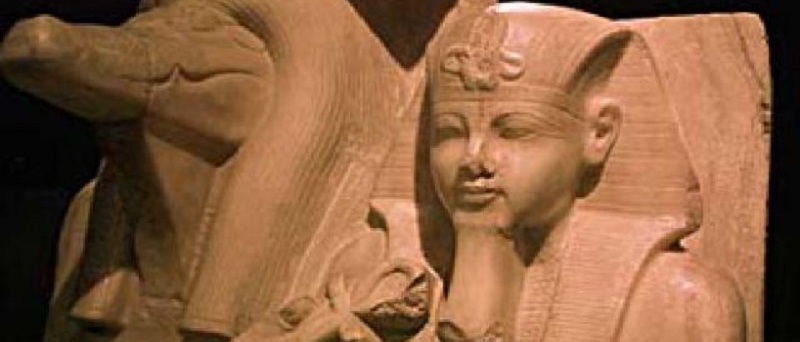Amenhotep III
Posted on 23rd December 2020
Amenhotep III inherited the crown from his father Thutmose IV, while still a child; he is believed to have ruled from around 1386BC.
He married his Great Royal Wife Tiye, and they had two sons during their marriage. There is speculation from carvings, that she may also have had 4 daughters, but this is unclear.
Amenhotep III had a peaceful and uneventful reign during a time of prosperity in Egypt. He is believed to have only gone to war once, to quell a rebellion in Nubia. During his reign Egypt was known for its artistic splendour and international power.
There are many surviving statues of Amenhotep III; the most of any Pharaoh. These total over two hundred and fifty pieces spanning the length of his reign. He was a great patron of the arts and some of the finest statues of Egyptian art were made for Amenhotep III. As well as these, there are over two hundred commemorative stone scarabs giving us a great insight into his life and accomplishments.
Over one hundred stone scarabs record the number of lions that he killed from years one to ten of his reign. This would be approximately one hundred and five ‘with his own arrows’. Another eleven show the excavation of an artificial lake he built for his wife Tiye.
Amenhotep III undertook a large building program, mainly around the temple at Karnak; included in this program is the temple of Luxor, which still stands today.
He also built his own palace, Per-Hay or ‘House of Rejoicing’ at Malkata in Western Thebes where he would celebrate three Sed festivals, in years thirty, thirty-four and thirty-seven of his reign. This palace consisted of a festival hall built especially for the occasion.
Amenhotep III reigned for around thirty-eight years; during the latter part of his reign there is speculation that he made his son Amenhotep IV co-regent, but this is uncertain.
At the time of Amenhotep III’s death, Egypt was at the height of its power and influence and was well respected across the world. He had been a successful Pharaoh becoming known as ‘Amenhotep the Magnificent’.
Tagged as: Junior Ancient Egypt
Share this post:





